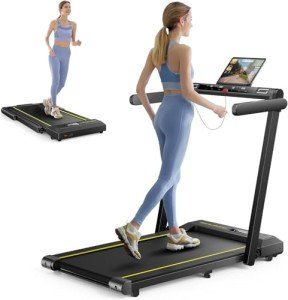The Rise of Non-Electric Treadmills: An Eco-Friendly Choice for Fitness Enthusiasts
Recently, the fitness industry has experienced a surge in need for non-electric treadmills. As people end up being more mindful of their carbon footprint and seek sustainable choices for their exercise routines, non-electric treadmills have become an appealing alternative to their motorized counterparts. This article explores the benefits, types, and features of non-electric treadmills, culminating in a detailed FAQ section to attend to common questions.
What is a Non-Electric Treadmill?
A non-electric treadmill, often described as a manual treadmill, operates without a source of power. Rather of being propelled mechanically, the user's body weight and movement drive the belt. This style creates a special experience, often requiring more effort however providing a number of benefits in regards to physical fitness and sustainability.
Advantages of Using Non-Electric Treadmills
- Sustainability: Non-electric treadmills eliminate the requirement for electricity, making them eco-friendly. This reduction in energy consumption can substantially add to lower electricity bills and a reduced carbon footprint.
- Boosted Workout Efficiency: Users should actively engage their muscles to keep speed, which can lead to more efficient workouts. This increased effort can equate to a higher calorie burn compared to electric designs.
- Versatility: Many non-electric treadmills can be changed to provide various incline levels. This function enables users to tailor their exercises, targeting various muscle groups and challenging themselves in new methods.
- Durability: Generally, non-electric treadmills have fewer mechanical parts than powered versions, leading to lower maintenance expenses and increased longevity.
- Compact Design: Many non-electric treadmills are created with portability in mind, making them simple to move and keep, perfect for those with minimal area.
Types of Non-Electric Treadmills
Non-electric treadmills can be categorized into numerous types based upon design and functions:
| Type | Description | Pros | Cons |
|---|---|---|---|
| Woodway Treadmills | Understood for their curved shape, offering a special running experience. | Lowers impact on joints, ideal for runners. | Normally more pricey. |
| Flat Non-Electric Treadmills | Fundamental design offering straightforward performance. | Budget-friendly and basic to utilize. | Might not have advanced functions. |
| Incline Manual Treadmills | Allows users to set an incline for included difficulty. | Versatile and adjustable exercises. | Can be physically requiring. |
| Folding Non-Electric Treadmills | Space-saving designs that can be easily stored away. | Hassle-free for small home. | May be less strong than non-folding options. |
Key Features to Consider
When choosing a non-electric treadmill, customers ought to focus on the following features:
- Build Quality: Ensure that the frame is sturdy and made from durable materials to withstand day-to-day usage.
- Running Surface: A wider and longer running surface supplies a more comfy experience, specifically for taller individuals.
- Incline Options: Adjustable incline settings can enhance workout variety and strength.
- Weight Capacity: Check the weight limitation to guarantee the treadmill accommodates all designated users.
- Mobility: If space is a concern, try to find a light-weight treadmill with wheels for easy movement.
- Warranty: A great service warranty shows the manufacturer's confidence in their item, providing assurance to consumers.
Non-Electric Treadmill vs. Electric Treadmill
| Feature | Non-Electric Treadmill | Electric Treadmill |
|---|---|---|
| Power Source | Manual (no electricity needed) | Requires electricity |
| Upkeep | Very little, typically requires no repairs | May need mechanical servicing |
| Calorie Burning | Usually higher due to user effort | Varies, typically lower for the exact same speed |
| Customizability | Minimal to manual changes | Offers numerous pre-set programs |
| Cost | Normally more budget-friendly | Can be more expensive due to features |
Regularly Asked Questions (FAQ)
1. Are non-electric treadmills appropriate for novices?
Yes, non-electric treadmills can be ideal for beginners, although they might need a steeper knowing curve for those unfamiliar with manual treadmills. hometreadmills.uk on a low incline can ease beginners into their physical fitness journey.
2. How do I preserve a non-electric treadmill?
Upkeep is very little. Regular cleansing and looking for any wear on the belt or deck can assist lengthen the life of the treadmill. Always describe the manufacturer's guidelines for detailed maintenance guidelines.
3. Can I work on a non-electric treadmill?
Definitely! Many non-electric treadmills are created to accommodate running. However, users should begin by walking and gradually increase their rate and incline as they construct strength and endurance.
4. How do non-electric treadmills manage weight?
A lot of non-electric treadmills have a weight capacity comparable to electric designs. Nevertheless, it is vital to inspect the specs to make sure proper assistance for the user's weight.
5. Exist any disadvantages to using a non-electric treadmill?
Some users might find that non-electric treadmills need more effort, perhaps making them more exhausting. Additionally, they may lack innovative functions found in electric designs, such as integrated workouts or heart rate screens.
As more individuals look for environmentally friendly and efficient fitness alternatives, non-electric treadmills have actually started to catch the attention of workout enthusiasts. With their blend of sustainability, efficiency, and durability, these manual devices can elevate any exercise regimen. By understanding their advantages, types, and necessary features, customers can make informed choices in selecting the right treadmill for their needs, eventually supporting a healthier way of life while contributing to a greener world.

